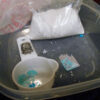Clinical question: Among survivors of hemorrhagic stroke, who is at high long-term risk of arterial thrombosis?
Background: Patients who survive intracerebral hemorrhage (ICH) are at increased risk of recurrent bleeding and arterial thrombotic events, including ischemic stroke (IS) and myocardial infarction (MI). The identification of a subset of these patients who may be at the highest risk of arterial thrombosis may help target secondary preventive therapy.
Study design: Prospective, hospital-based, multicenter, observational study of patients with ICH who survived 30 days. The primary endpoint was a composite of IS, MI, or other arterial thrombotic events. Secondary endpoints included major hemorrhage and recurrent ICH.
Setting: 13 centers from the MUCH-ITALY (multicenter study on cerebral hemorrhage in Italy) group of hospitals, from January 2002 to July 2014.
Synopsis: Of the 2,864 patients enrolled in the study, 347 were lost to follow up and 788 died in the first 30 days, leaving 1,729 participants for the analysis. The median follow-up was 43 months. The primary endpoint occurred in 169 patients (9.7%), of whom 108 had IS and 39 had MI. Major hemorrhage, of which 219 were recurrent ICH, occurred in 231 patients.
In multivariable, proportional, hazard regression analysis, the risk of the primary outcome was increased for male sex, diabetes, hypercholesterolemia, atrial fibrillation, history of coronary artery disease, use of statins, and use of antithrombotic medications. The MUCH score was generated using these covariates and had moderate discrimination for the risk of long-term arterial thrombosis (areas under the curve were 0.716, 0.672, and 0.744 at one, five, and 10 years, respectively). The risk of major hemorrhagic events was predicted by age, lobar location of hematoma, and hematoma expansion.
Limitations of the study included the lack of information on how effectively risk factors were controlled during the follow-up period and the lack of validation in an independent cohort.
Bottom line: The MUCH score may be a useful tool to help guide secondary prevention with antithrombotic agents in survivors of ICH.
Citation: Pezzini A, et al. Long-term risk of arterial thrombosis after intracerebral hemorrhage: MUCH-Italy. Stroke. 2024;55(3):634-42.

Dr. Sawant
Dr. Sawant is a hospitalist in the division of hospital medicine at the Mount Sinai Health System and an assistant professor of medicine at the Icahn School of Medicine at Mount Sinai in New York.

